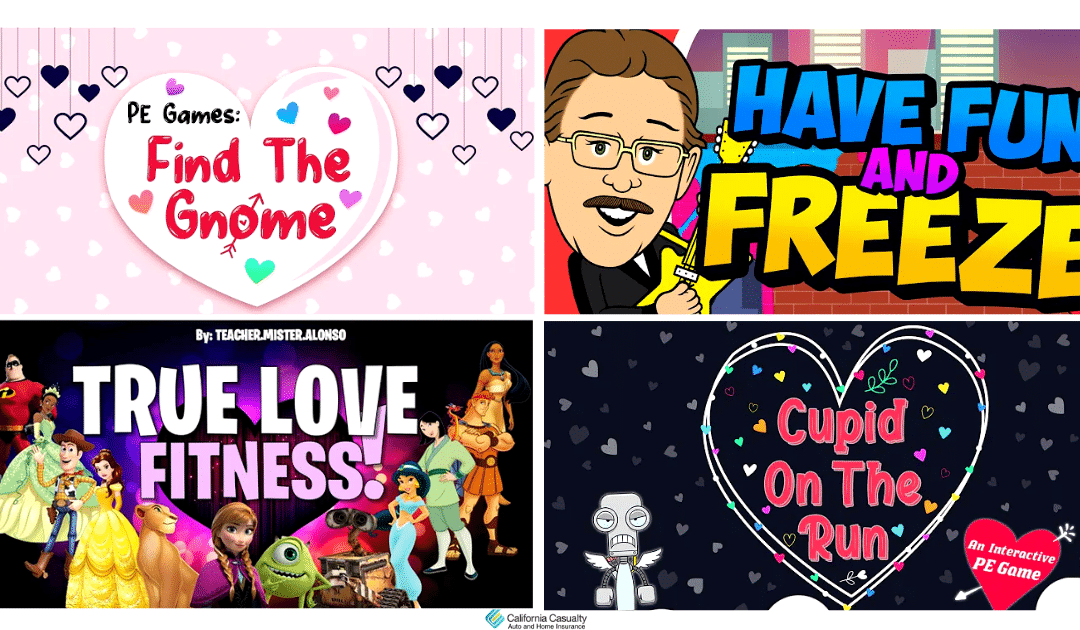
by California Casualty | Pets |
It’s no secret our pets bring us so much joy, but owning a pet – especially one that’s young – is a lot of responsibility. Like children they are not something that can be brought home and forgotten about, they require your time, effort, and care.
February is responsible pet owner’s month, and whether you’re bringing home your first pet or your 6th, it’s always good to be reminded how to be a responsible and caring owner.
Here’s are 10 responsible pet owner tips that will help you and your furry friend adjust to this new life together.
1. Recognize they are a commitment. Your lifestyle may have to adjust based on the needs of your pet. Make sure you are ready to make this commitment before you bring them home.
2. Create a safe space for them. Pet-proof your home to avoid accidents and give them a space that is completely their own, with a bed, toys, blankets, food, and water.
3. Give them time to adjust. When you bring them home they may be timid or wild, but give them the time and they will learn their new home and your routine.
4. Visit the vet. Even if they hate it, preventive care is essential in making sure your pet stays happy and healthy.
5. Make them tags. Microchip and/or give them ID tags with your name and number on them, in the event that they escape, you will be notified if they are found.
6. Train them. Don’t give up on your pet if they aren’t acting like you thought they would, as their owner it’s your responsibility to put in the time and effort to train them or have them trained.
7. Create a healthy lifestyle for them. Feed them a healthy pet food and be sure not over or underfeed them. Exercise is also very important, especially for young pets that need to exercise to release their extra energy.
8. Socialize them. Let them play with friends and family, and also other pets. If they are too scared or anxious you may have to work on socialization with your vet or trainer.
9. Give them love & affection. Like humans, pets crave your love and attention and need it to be happy in your home.
10. Make them feel like part of the family. Most importantly, treat them like a member of your family, because they are 🙂
Don’t forget to make sure your new pet is covered! Pet health insurance helps you pay for expensive veterinary bills, so you don’t have to. Pets Best pet insurance is available to all California Casualty members at a 5%* discount. Click here for your quote.
We know that bringing home a new pet can be just as scary as it is exciting, but don’t worry, you’ve got this!
For more new pet tips click here.
This article is furnished by California Casualty, providing auto and home insurance to educators, law enforcement officers, firefighters, and nurses. Get a quote at 1.866.704.8614 or www.calcas.com.

by California Casualty | Auto Insurance Info, Homeowners Insurance Info |
Umbrella Insurance, sometimes called “personal umbrella insurance”, is a type of personal liability insurance that provides an extra layer of affordable liability protection in the event of an accident.
Adding Umbrella Insurance protects you and your family by covering additional damage costs that extend beyond the limits of your homeowner’s, auto, or watercraft policies. This additional coverage ensures your personal assets are safe.
Considering adding an Umbrella Insurance policy? Here are some answers to frequently asked questions.
What does it cover?
The primary purpose of this coverage is to protect you if you’re found liable for causing bodily injury to others or damage to their property. It also protects against incidents involving slander, libel, false arrest, and invasion of privacy, as well as any legal defense costs – even if you’re not found liable. It protects not just you as a policyholder, but also other family members within your household.
What does it not cover?
Umbrella insurance does not cover damage to your own property, nor does it cover any deliberate damage to others’ property caused by anyone on the policy.
How does it work?
Think of it as a “supplement” to your core coverage. Let’s say you have liability limits of $250,000 through your auto and homeowners insurance and you’re sued for $1,000,000. The umbrella insurance would kick in after legal fees and costs exceed $250,000 – which can happen staggeringly quickly – protecting you against having to pay the remaining amount out of pocket.
How do you know if you need it?
You might need an umbrella policy if you: own a car, own a home, want to protect your assets against a lawsuit or judgment, or want to protect your retirement savings or future earnings. Accidents happen every day – umbrella insurance is an affordable way to protect the assets that you’ve worked hard to acquire.
How much does it cost?
For the amount of protection it offers, liability insurance is surprisingly affordable. The decision on whether or not to get it calls for weighing the risk of what you stand to lose – current assets as well as the potential loss of future income or earnings. It’s especially affordable if you already have a policy with the same insurance company. Are you already a California Casualty member? Call us for an Umbrella Insurance quote today!
Does it cover car rentals?
Your automobile policy is the primary coverage for any damage or injuries you might cause while driving a rental car. However, if the cost of damage or any lawsuit fees is greater than your auto insurance liability limits, that’s when umbrella insurance protection would provide you further protection.
Does it cover rental property?
If you’re a renter and have renters insurance, an umbrella policy can extend your liability protection beyond the limits of your primary policy. If you’re a landlord, this coverage can help protect you from lawsuits by tenants, their guests, or other third parties.
If you are still on the fence about Umbrella Insurance, here’s what you can do. Add the value of your home, significant assets, and any investment portfolios or retirement savings accounts, and determine how much liability coverage you have from your home and auto policies. Do your current policies cover your assets?
If the answer is no, it may be time to consider an Umbrella Insurance Policy.
Find out more about what we have to offer by calling us at 877.652.2638, or email us at agencyservices@calcas.com.
This article is furnished by California Casualty, providing auto and home insurance to educators, law enforcement officers, firefighters, and nurses. Get a quote at 1.866.704.8614 or www.calcas.com.

by California Casualty | Educators |
Get your students up and moving at your Valentine’s Day classroom party with our list of fun Valentine’s Day-themed brain breaks! These YouTube videos are all free and great for socially distant in-person learning, and for hybrid or online teachers looking...

by California Casualty | Homeowners Insurance Info |
If you rent your home, having renters insurance is a no-brainer: It protects against loss and damage to your belongings and usually costs less per month than a fast-food order. But what about when you add a roommate to the mix? How does that affect your policy and coverage?
Here are answers to some of the most common insurance questions in a roommate situation.
Can I share a policy with a roommate?
California Casualty does not allow roommates to purchase a policy together. However, we offer a low or no cost endorsement, “Other Members of Household” that the insured can add to cover the roommate. This endorsement extends coverage for unrelated household members who live and maintain contents at the insured location, like a review. The maximum number of unrelated roommates that can be added to a policy is two.
How do I add a roommate to my policy?
California Casualty does not require both roommate’s names to appear on the lease. We only need the roommate’s name and the estimated value of property and increase the coverage amount if it is not adequate enough to cover the roommate’s personal belongings. You’ll want to go through the policy in detail with your insurance agent and roommate to make sure all the coverage, liability, and policy details are clear, understood, and agreeable to all parties.
What will the policy cover?
All policies have coverage limits. Typically, in a shared policy situation, the coverage limit doesn’t increase with the addition of a roommate but gets split between you. You’ll need to decide if the coverage limit is adequate given the value of your and your roommate’s possessions combined. Policies typically also cover personal liability, which helps cover the costs due to accidental property damage and accidental bodily injury.
What if my roommate moves out?
You’ll need to update your policy as soon as there are any changes to your roommate situation. If your roommate moves out, you’ll need to make yourself the sole policyholder asap. If you decide to bring in another roommate (and you both want to share a policy), you’d need to go through the policy update process again.
Further considerations
If you’re considering sharing a policy but are just not sure, think about the following.
-
- Take stock of what you own. If your possessions are worth much more than your roommate’s, it may not be worth sharing a policy.
- Check for potential cost savings. Working with your insurance agent, price out a shared policy versus a single policy. In some cases, a solo policy ends up being more affordable while offering more coverage.
- Choose your roomie well! The secret to a good shared policy situation is a strong underlying relationship where you and your roommate are on good terms, can have honest conversations, and trust each other.
Deciding whether or not to share a policy is a very personal and individual choice – only you can know if it’s the best choice for you. But in the end, whether you decide for solo or shared, the most important decision is that you get protection as a renter. Check out the top 5 reasons to get renters insurance here.
This article is furnished by California Casualty, providing auto and home insurance to educators, law enforcement officers, firefighters, and nurses. Get a quote at 1.866.704.8614 or www.calcas.com.

by California Casualty | Auto Insurance Info, Consider This |
It’s officially pothole season.
Potholes can pop up on roadways during any season, but why do they seem so prevalent during the first few months of the year?
When winter is ending and spring is on the horizon, the weather is constantly fluctuating between mild and freezing temperatures. Rain, snow, and ice get into smaller holes and cracks in the pavement, and as the temperature jumps back and forth from high to low, the precipitation continually freezes and thaws expanding those pavement cracks causing others to form. As cars and heavy trucks drive over them, the asphalt chips away, thus creating potholes.
Potholes, no matter how small, can wreak havoc on your entire vehicle. Here are 5 ways hitting a pothole can cause damage.
1. Steering & Suspension
Your vehicle’s suspension absorbs bumps so you can’t feel them when you drive. If you cause enough wear and tear on your suspension system, it could result in a number of problems with your steering, including: vibrations, noises when you turn, vehicle pulling to one side, etc.
2. Undercarriage
Vehicles that ride lower to the ground have a better chance of being damaged by a pothole. They can cause scratches and scrapes, that aren’t dangerous until they start to rust or leak. They can also rip off low-hanging bumpers.
3. Tires & Wheels
It’s no secret that debris from potholes can cause holes, leaks, and tears in your tire, but when you hit a pothole fast enough, it can also cause a complete tire blowout. Potholes can also damage your wheels by bending or cracking your rim. And if there is visible damage, you’ll likely have to replace the entire wheel.
4. Body & Exhaust System
Pavement debris and rocks can scratch the paint on your vehicle and cause rips and leaks in your exhaust pipes, muffler, and catalytic converter. If your exhaust pipes have been damaged, it can be a serious issue. Ripped pipes can leak exhaust fumes into the cabin of your vehicle and cause serious health issues (including death). If you hear a strange noise or lose power after hitting a pothole, there is a good chance your exhaust pipes have been damaged and you need to pull over.
5. Loss of Control
Lastly, one of the most dangerous consequences of hitting a pothole is that it could cause you to lose control of your vehicle. Losing control for even a few seconds, could not only cause damage to your vehicle, but could also be deadly for you and your passengers. That is why it is important to watch the road for potholes when you drive and try and avoid them.
Potholes are extremely dangerous for you and your vehicle, but sometimes accidents do happen.
So, what if you accidentally hit a pothole, is damage done to your vehicle covered by insurance? Typically pothole damage is covered if you have collision insurance. If you aren’t sure, call your agent and review your coverage today.
This article is furnished by California Casualty, providing auto and home insurance to educators, law enforcement officers, firefighters, and nurses. Get a quote at 1.866.704.8614 or www.calcas.com.





